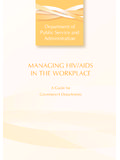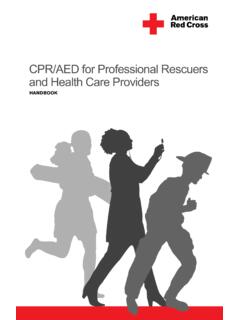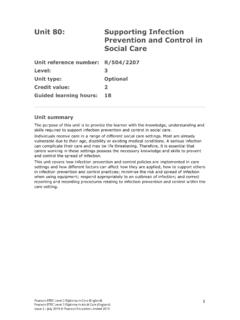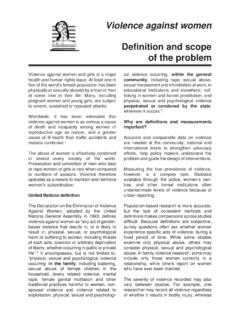Transcription of Updated U.S. Public Health Service Guidelines for the ...
1 June 29, 2001 / Vol. 50 / No. RR-11. Nurses and Nurses Recommendations and Physicians and Reports for Education Physicians Examination Updated Public Health Service for Guidelines for the Management Education Education of Occupational Exposures to HBV, HCV, and HIV. and Recommendations Continuing for Postexposure Prophylaxis Medical Medical Inside: Continuing Inside: Continuing DEPARTMENT OF Health AND HUMAN SERVICES. Centers for Disease Control and Prevention (CDC). Atlanta, GA 30333. Inside: The MMWR series of publications is published by the Epidemiology Program Office, Centers for Disease Control and Prevention (CDC), Department of Health and Human Services, Atlanta, GA 30333. SUGGESTED CITATION. Centers for Disease Control and Prevention. Updated Public Health Service Guidelines for the Management of Occupational Exposures to HBV, HCV, and HIV and Recommendations for Postexposure Prophylaxis.
2 MMWR 2001;50(No. RR-11): [inclusive page numbers]. Centers for Disease Control and Prevention .. Jeffrey P. Koplan, , Director The material in this report was prepared for publication by National Center for Infectious Diseases .. James H. Hughes, Director Division of Healthcare Quality Promotion .. Julie L. Gerberding, , Director Division of Viral Hepatitis (Proposed) .. Harold S. Margolis, Acting Director Division of AIDS, STD, and TB Laboratory Research .. Harold W. Jaffe, Director National Center for HIV, STD, and TB Prevention .. Helene D. Gayle, , Director Division of HIV/AIDS Prevention Surveillance and Epidemiology .. Robert S. Janssen, Director National Institute for Occupational Safety and Health .. Kathleen Rest, Acting Director Division of Surveillance, Hazard Evaluations, and Field Studies.
3 R. Delon Hull, Acting Director This report was produced as an MMWR serial publication in Epidemiology Program Office .. Stephen B. Thacker, , Director Office of Scientific and Health Communications .. John W. Ward, Director Editor, MMWR Series CDC Surveillance Summaries .. Suzanne M. Hewitt, Managing Editor .. Patricia A. McGee Project Editor .. Lynda G. Cupell and Morie M. Higgins Visual Information Specialists Michele D. Renshaw and Erica R. Shaver Information Technology Specialists Vol. 50 / No. RR-11 MMWR i Contents Summary .. 1. Introduction .. 2. Definition of Health -Care Personnel and Exposure .. 2. Background .. 3. Occupational Transmission of HBV .. 3. Occupational Transmission of HCV .. 6. Occupational Transmission of HIV .. 7. Recommendations for the Management of HCP Potentially Exposed to HBV, HCV, or HIV.
4 15. Hepatitis B Vaccination .. 16. Treatment of an Exposure Site .. 17. Exposure Report .. 17. Evaluation of the Exposure and the Exposure Source .. 17. Management of Exposures to HBV .. 20. Management of Exposures to HCV .. 21. Management of Exposures to HIV .. 23. Recommendations for the Selection of Drugs for HIV PEP .. 26. Occupational Exposure Management Resources .. 29. References .. 33. Appendices .. 43. Continuing Education Examination .. CE-1. ii MMWR June 29, 2001. The following CDC staff members prepared this report: Elise M. Beltrami, Francisco Alvarado-Ramy, Sara E. Critchley, Adelisa L. Panlilio, , Denise M. Cardo, Division of Healthcare Quality Promotion National Center for Infectious Diseases William A. Bower, Miriam J. Alter, Division of Viral Hepatitis*.
5 National Center for Infectious Diseases Jonathan E. Kaplan, Division of AIDS, STD, and TB Laboratory Research National Center for Infectious Diseases and Division of HIV/AIDS Prevention National Center for HIV, STD, and TB Prevention Boris Lushniak, , Division of Surveillance, Hazard Evaluations, and Field Studies National Institute for Occupational Safety and Health in collaboration with David K. Henderson, National Institutes of Health Kimberly A. Struble, Food and Drug Administration Abe Macher, Health Resources and Services Administration * Proposed. Vol. 50 / No. RR-11 MMWR 1. Updated Public Health Service Guidelines for the Management of Occupational Exposures to HBV, HCV, and HIV and Recommendations for Postexposure Prophylaxis Summary This report updates and consolidates all previous Public Health Service recommendations for the management of Health -care personnel (HCP) who have occupational exposure to blood and other body fluids that might contain hepatitis B virus (HBV), hepatitis C virus (HCV), or human immunodeficiency virus (HIV).
6 Recommendations for HBV postexposure management include initiation of the hepatitis B vaccine series to any susceptible, unvaccinated person who sustains an occupational blood or body fluid exposure. Postexposure prophylaxis (PEP). with hepatitis B immune globulin (HBIG) and/or hepatitis B vaccine series should be considered for occupational exposures after evaluation of the hepatitis B. surface antigen status of the source and the vaccination and vaccine-response status of the exposed person. Guidance is provided to clinicians and exposed HCP. for selecting the appropriate HBV PEP. Immune globulin and antiviral agents ( , interferon with or without ribavirin). are not recommended for PEP of hepatitis C. For HCV postexposure management, the HCV status of the source and the exposed person should be determined, and for HCP exposed to an HCV positive source, follow-up HCV testing should be performed to determine if infection develops.
7 Recommendations for HIV PEP include a basic 4-week regimen of two drugs (zidovudine [ZDV] and lamivudine [3TC]; 3TC and stavudine [d4T]; or didanosine [ddI] and d4T) for most HIV exposures and an expanded regimen that includes the addition of a third drug for HIV exposures that pose an increased risk for transmission. When the source person's virus is known or suspected to be resistant to one or more of the drugs considered for the PEP regimen, the selection of drugs to which the source person's virus is unlikely to be resistant is recommended. In addition, this report outlines several special circumstances ( , delayed exposure report, unknown source person, pregnancy in the exposed person, resistance of the source virus to antiretroviral agents, or toxicity of the PEP.)
8 Regimen) when consultation with local experts and/or the National Clinicians' Post- Exposure Prophylaxis Hotline ([PEPline] 1-888-448-4911) is advised. Occupational exposures should be considered urgent medical concerns to ensure timely postexposure management and administration of HBIG, hepatitis B. vaccine, and/or HIV PEP. 2 MMWR June 29, 2001. INTRODUCTION. Avoiding occupational blood exposures is the primary way to prevent transmission of hepatitis B virus (HBV), hepatitis C virus (HCV), and human immunodeficiency virus (HIV) in Health -care settings (1 ). However, hepatitis B immunization and postexposure management are integral components of a complete program to prevent infection fol- lowing bloodborne pathogen exposure and are important elements of workplace safety (2 ).
9 The Public Health Service (PHS) has published previous Guidelines for the man- agement of HIV exposures that included considerations for postexposure prophylaxis (PEP) (3 5 ). Since publication of the 1998 HIV exposure Guidelines (5 ), several new antiretroviral agents have been approved by the Food and Drug Administration (FDA), and more information is available about the use and safety of HIV PEP (6 11 ). In addition, questions exist regarding considerations about PEP regimens when the source person's virus is known or suspected to be resistant to one or more of the antiretroviral agents that might be used for PEP. Concern also has arisen about the use of PEP when it is not warranted. Data indicate that some Health -care personnel (HCP) take a full course of HIV. PEP after exposures that do not confer an HIV transmission risk (10,11 ).
10 In September 1999, a meeting of a PHS interagency working group* and expert consultants was convened by CDC. The PHS working group decided to issue Updated recommendations for the management of occupational exposure to HIV. In addition, the report was to include recommendations for the management of occupational HBV and HCV exposures so that a single document could comprehensively address the manage- ment of occupational exposures to bloodborne pathogens. This report updates and con- solidates the previous PHS Guidelines and recommendations for occupational HBV, HCV, and HIV exposure management for HCP. Specific practice recommendations for the management of occupational bloodborne pathogen exposures are outlined to assist Health -care institutions with the implementation of these PHS Guidelines (Appendices A.)


















